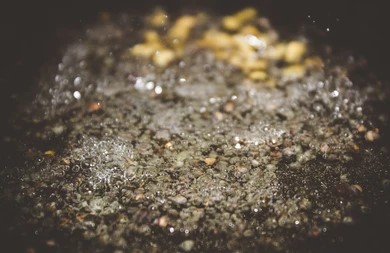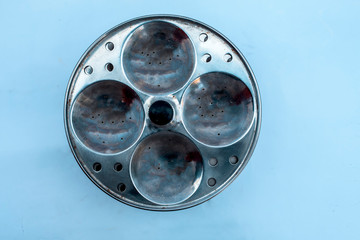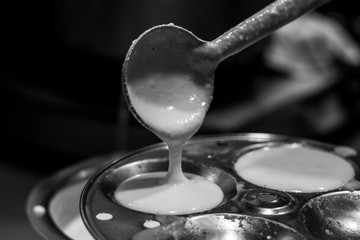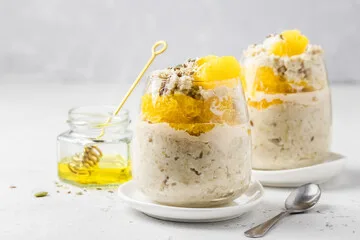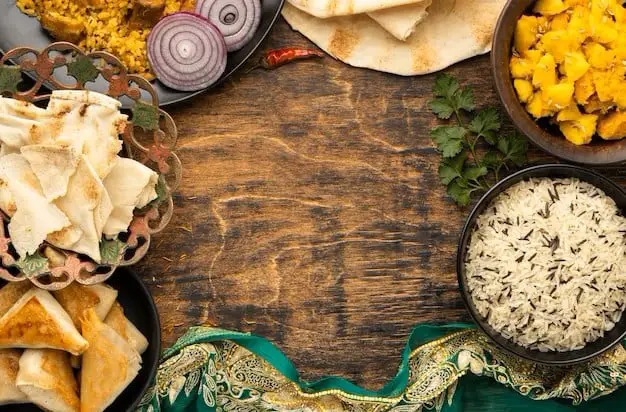Hey there, food lovers! Today, we’re diving into the world of South Indian cuisine with a super easy and tasty dish called Rava Idly. If you’re looking for a quick breakfast or snack that’s both healthy and delicious, you’re in for a treat!
Rava Idly, also spelled as Rawa Idly, is a popular variation of the traditional rice idly. It’s made with semolina (rava or sooji) instead of rice and lentils, which means it’s faster to prepare and doesn’t require fermentation. Perfect for those busy mornings when you want something homemade but don’t have hours to spare!
Table of Contents
What is Rava Idly?
Rava Idly is a steamed cake made from semolina, yogurt, and a few other simple ingredients. It’s soft, fluffy, and has a slightly grainy texture that’s absolutely delightful. Originally from the state of Karnataka in South India, this dish has become a favorite across the country and beyond.
Why You’ll Love it:
- Quick to make: Unlike traditional idly, which needs hours of fermentation, This Idly can be ready in just 30-40 minutes!
- Healthy: It’s steamed, not fried, making it a nutritious choice for any meal.
- Versatile: You can enjoy it for breakfast, as a snack, or even as a light dinner.
- Easy to customize: Add veggies, nuts, or spices to make it your own.
Ingredients You’ll Need:
- 1 cup semolina (rava or sooji)
- 1 cup yogurt (curd)
- 1/2 cup water
- 1 tsp oil
- 1/2 tsp salt
- 1/2 tsp baking soda
- 1 tsp mustard seeds
- 1 tsp urad dal (split black gram)
- 1 tsp chana dal (split chickpeas)
- A few curry leaves
- 1 green chili, finely chopped (optional)
- 1 small carrot, grated (optional)
- 2 tbsp coriander leaves, chopped
Step-by-Step Recipe:
- Roast the Rava:
Start by dry roasting the semolina in a pan over medium heat for about 5 minutes. This step is crucial as it removes any raw smell and makes the idlies lighter. Set it aside to cool.
- Prepare the Tempering:
Heat the oil in the same pan and add the mustard seeds. When they start to splutter, add urad dal, chana dal, curry leaves, and green chili (if using). Sauté until the dals turn golden brown.
- Mix the Batter:
In a large bowl, combine the roasted semolina, yogurt, water, and salt. Mix well to form a smooth batter. Add the tempered spices and mix again. The consistency should be similar to cake batter – not too thick or too thin.
- Add Vegetables:
If you’re using grated carrot or any other vegetables, now’s the time to add them. Fold them gently into the batter.
5. Rest the Batter:
Let the batter rest for about 15-20 minutes. This allows the rava to absorb the liquid and swell up.
6. Add Baking Soda:
Just before steaming, add baking soda to the batter and mix gently. This will help make your idlies soft and fluffy.
7. Prepare for Steaming:
Grease your idly molds with a little oil. If you don’t have idly molds, you can use small bowls or even a muffin tray!
8. Steam the Idlies:
Pour the batter into the greased molds, filling each about 3/4 full. Steam for ten to twelve minutes, or until a toothpick put into the steamer comes out clean.
9. Serve:
Let the idlies cool for a minute or two, then use a spoon to gently remove them from the molds. Serve hot with chutney and sambar!
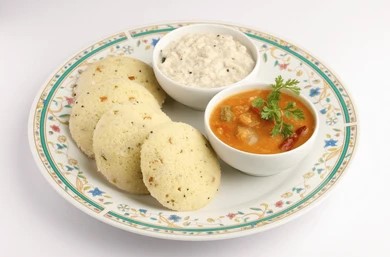
Serving Suggestions:
Rava Idly is traditionally served with coconut chutney and sambar. Here are some quick recipes for these accompaniments:
Quick Coconut Chutney:
- Blend 1 cup grated coconut, 2 green chilies, a small piece of ginger, and salt to taste.
- Temper with mustard seeds, urad dal, and curry leaves in hot oil, and mix into the chutney.
Easy Sambar
- Cook toor dal with turmeric, tomatoes, and your choice of vegetables.
- Add tamarind paste, sambar powder, and salt.
- Temper with mustard seeds, curry leaves, and asafoetida.
Health Benefits of Rava Idly:
1. Low in Calories: Perfect for those watching their weight.
2. Good Source of Carbohydrates: Provides energy for your day.
3. Protein from Yogurt: Helps in muscle building and repair.
4. Steamed, Not Fried: Lower in fat compared to many breakfast options.
5. Customizable: Add vegetables for extra nutrients.
Nutrition chart
I’ll create a nutrition chart for this recipe. Please note that these values are approximate and can vary based on specific ingredients and preparation methods. This chart is for one medium-sized Idly (about 50-60 grams).
| Nutrient | Amount | % Daily Value* |
|---|---|---|
| Calories | 85-95 kcal | 4-5% |
| Total Carbohydrates | 15-18 g | 5-6% |
| Dietary Fiber | 0.5-1 g | 2-4% |
| Sugars | 0.5-1 g | – |
| Protein | 2-3 g | 4-6% |
| Total Fat | 1-2 g | 1-3% |
| Saturated Fat | 0.2-0.5 g | 1-3% |
| Cholesterol | 0-5 mg | 0-2% |
| Sodium | 150-200 mg | 6-8% |
| Potassium | 30-50 mg | 1-2% |
| Calcium | 20-30 mg | 2-3% |
| Iron | 0.5-1 mg | 3-6% |
| Vitamin A | 10-20 IU | 0-1% |
| Vitamin C | 0-1 mg | 0-1% |
*Percent Daily Values are based on a 2,000 calorie diet. Your daily values may be higher or lower depending on your calorie needs.
Additional notes:
- The calorie content can increase if more oil is used in the tempering or if the idly molds are generously greased.
- The protein content may vary depending on the amount of yogurt used in the batter.
- If vegetables like carrots or peas are added, the fiber, vitamin, and mineral content will increase slightly.
- The sodium content can vary significantly based on the amount of salt added and whether baking soda is used.
- This chart doesn’t account for any accompaniments like chutney or sambar, which would add to the overall nutritional intake.
- The nutritional profile can be enhanced by using whole wheat rava (semolina) instead of regular rava, which would increase the fiber content.
Remember, this Idly is generally considered a healthy breakfast option due to its low fat content and the fact that it’s steamed rather than fried. However, as with any food, it’s best enjoyed as part of a balanced diet.
Rava Idly vs. Traditional Rice Idly:
While both are beloved South Indian dishes, there are some key differences:
- Ingredients: Rava Idly uses semolina, while traditional idly uses rice and urad dal.
- Preparation time: Rava Idly can be made in under an hour, while traditional idly requires overnight fermentation.
- Texture: Rava Idly has a slightly grainy texture, while rice idly is smoother.
- Taste: Rava Idly has a distinct nutty flavor from the semolina, while rice idly is milder.
- Digestibility: Some find Rava Idly easier to digest, especially those who have trouble with fermented foods.
Troubleshooting Common Issues:
- Idlies are too dense:
- Solution: Make sure you’re using the right proportion of liquid to semolina. Also, don’t overmix the batter after adding baking soda.
- Idlies are sticking to the molds:
- Solution: Grease the molds well with oil before adding the batter. You can also line the molds with small pieces of parchment paper.
- Idlies are too soft or mushy:
- Solution: You might be adding too much water or yogurt. Reduce the liquid content slightly in your next batch.
- Idlies have a strong soda taste:
- Solution: You’re probably using too much baking soda. Remember, a little goes a long way!
- Idlies are breaking apart:
- Solution: Let them cool for a minute or two before removing from the molds. Also, make sure you’re not overcooking them.
Rava Idly for Special Diets:
- Low-calorie diet: Rava Idly is naturally low in calories. You can further reduce calories by using low-fat yogurt and minimizing oil in the tempering.
- High-protein diet: Add more protein by mixing in some besan (chickpea flour) or serving with a side of Greek yogurt.
- Diabetic-friendly: While semolina does contain carbs, the glycemic load can be reduced by adding vegetables and serving with a protein-rich side dish.
- Vegan version: Replace yogurt with plant-based yogurt or a mixture of water and a splash of lemon juice for tanginess.
Storing and Reheating Rava Idly:
While Rava Idly is best enjoyed fresh, you can store leftovers:
- Refrigeration: Store in an airtight container for up to 2 days.
- Freezing: Wrap individual idlies in plastic wrap and freeze for up to a month.
- Reheating: Steam for 2-3 minutes or microwave with a sprinkle of water for about 30 seconds.
Rava Idly Around the World:
As Indian cuisine gains popularity globally, Rava Idly has found its way onto international menus:
- United States: Many Indian restaurants in cities like New York and San Francisco now offer Rava Idly as a breakfast option.
- United Kingdom: It’s becoming a popular choice in Indian cafes, especially in areas with large South Indian populations.
- Singapore and Malaysia: Given the significant Indian population, Rava Idly is commonly found in local Indian eateries.
- Australia: As part of the growing interest in diverse breakfasts, Rava Idly is appearing in trendy cafes in major cities.
Rava Idly in Popular Culture:
- Food shows: Rava Idly has been featured on various cooking shows, both in India and internationally, as an example of quick and healthy Indian cuisine.
- Social media: The dish has gained popularity on platforms like Instagram and TikTok, with food bloggers sharing their versions and tips.
- Cookbooks: Many modern Indian cookbooks now include Rava Idly recipes, often with creative twists.
Sustainability Aspect:
Rava Idly is a relatively sustainable dish:
- Energy-efficient: It requires less cooking time compared to many other breakfast options.
- Reduces food waste: The ingredients have a long shelf life, reducing the chance of spoilage.
- Plant-based option: It’s primarily made from plant-based ingredients, which generally have a lower environmental impact than animal-based foods.
Rava Idly for Kids:
This dish can be a great way to introduce children to Indian flavors:
- Fun shapes: Use different shaped molds to make the idlies more appealing to kids.
- Color it up: Add natural food coloring or vegetable purees to make colorful idlies.
- Dip it: Serve with mild, kid-friendly dips like tomato ketchup or mild yogurt sauce.
Rava Idly in Modern Cuisine:
Innovative chefs are finding new ways to incorporate Rava Idly into fusion dishes:
- Rava Idly pizzas: Using idlies as a base for toppings.
- Rava Idly sandwiches: Slicing idlies and using them as bread for sandwiches.
- Rava Idly upma: Crumbling leftover idlies to make a breakfast upma.
Frequently Asked Questions:
Q: Can I make the batter in advance?
A: Yes, you can prepare the batter a few hours in advance and refrigerate it. Just remember to add the baking soda right before steaming.
Q: My Rava Idlies turned out hard. What went wrong?
A: This could be due to overcooking or using too little liquid in the batter. Make sure your batter is of pouring consistency and don’t steam for too long.
Q: Can I make Rava Idly without yogurt?
A: While yogurt adds a nice tangy flavor, you can replace it with buttermilk or even just water if you prefer.
Q: How long can I store Rava Idly?
A: Rava Idly is best enjoyed fresh, but you can store it in an airtight container in the refrigerator for up to 2 days. Before serving, reheat in a steamer or microwave.
Q: Is Rava Idly gluten-free?
A: No, semolina contains gluten. For a gluten-free version, you can try using gluten-free flours like jowar (sorghum) or ragi (finger millet).
Rava Idly in Indian Culture:
Rava Idly holds a special place in South Indian cuisine. It’s not just a breakfast item but also a popular evening snack. Many South Indian restaurants and cafes serve Rava Idly throughout the day, often alongside filter coffee – another South Indian specialty.
In Karnataka, where Rava Idly originated, it’s common to find street vendors selling this dish in the early morning hours. It’s a favorite among working professionals and students who need a quick, filling breakfast before starting their day.
The popularity of Rava Idly has spread beyond South India, and you can now find it in Indian restaurants worldwide. Its simplicity and delicious taste have made it a hit even among those who aren’t familiar with traditional South Indian cuisine.
Conclusion
Rava Idly is more than just a quick breakfast option – it’s a versatile dish that reflects the adaptability and ingenuity of Indian cuisine. From its wartime origins to its current status as a beloved staple, Rava Idly has proven its staying power.
Whether you’re a busy professional looking for a quick breakfast, a parent trying to introduce your kids to new flavors, or a food enthusiast exploring global cuisines, Rava Idly has something to offer. While it’s versatility allows for inventive versions that can challenge even seasoned chefs, its simplicity makes it accessible to novice cooks.
As we become more conscious of our food choices – considering factors like nutrition, sustainability, and cultural significance – dishes like Rava Idly shine. It serves as a reminder that sometimes the simplest ingredients and tried-and-true cooking methods produce the most enjoyable dinners.
Thus, the next time you want something different for breakfast or are hankering after a flavor of South India, consider making Rava Idly. Who knows? It could end up being your new favorite comfort food. Enjoy your cooking, and don’t forget to tell us about your experiences using Rava Idly!
Rava Idly| Rawa Idly
A classic South Indian morning meal that puts a wonderful twist on the conventional rice idly is called Rava Idly, or Rawa Idly. Using semolina (rava or sooji) in place of rice, this quick and simple recipe is ideal for hectic mornings when you're craving a hearty, homemade supper.
Originally from Karnataka, Rava Idly has gained popularity in India and other countries. It differs from its equivalent made with rice in that it has a little gritty feel and a delicate, fluffy texture. The finest aspect? You can quickly prepare these steamed cakes in 30 to 40 minutes because there is no need for fermentation!

Ingredient List
Instructions
recipe details
-
Step 1: Roasting the Rava
- Heat a Pan: Place a pan on medium heat and add 1 tablespoon of oil.
- Add Semolina: Once the oil is hot, add 1 cup of rava (semolina) to the pan.
- Roast the Rava: Roast the rava on medium heat, stirring continuously until it turns light golden brown. This should take about 5-7 minutes. Be careful not to burn it.
- Cool the Rava: Transfer the roasted rava to a plate and let it cool completely.
-
Step 2: Preparing the Tempering
- Heat Oil: In the same pan, add another tablespoon of oil.
- Add Mustard Seeds: Once the oil is hot, add 1 teaspoon of mustard seeds and let them crackle.
- Add Urad Dal and Chana Dal: Add 1 teaspoon each of urad dal and chana dal. Sauté them until they turn golden brown.
- Add Cashew Nuts: Add 1 tablespoon of cashew nuts (optional) and fry until golden.
- Add Green Chili and Ginger: Add 1 finely chopped green chili and 1/2 inch of finely chopped ginger. Sauté for a minute.
- Add Curry Leaves: Add a few curry leaves and sauté for another 30 seconds.
- Combine with Rava: Add the roasted rava to the tempering and mix well.
-
Step 3: Making the Batter
- Mix Yogurt and Water: In a large mixing bowl, whisk together 1 cup of yogurt and 1/2 cup of water until smooth.
- Add Rava Mixture: Add the roasted rava mixture to the yogurt and water. Mix well to form a thick batter.
- Rest the Batter: Let the batter rest for 15-20 minutes. This allows the rava to soak up the moisture and expand.
-
Step 4: Preparing to Steam
- Grease the Idly Moulds: While the batter is resting, grease the idly moulds with a little oil.
- Preheat the Steamer: Fill a steamer with water and bring it to a boil.
-
Step 5: Finalizing the Batter
- Add Baking Soda: Just before steaming, add 1/4 teaspoon of baking soda to the batter. Mix gently but thoroughly.
- Check Consistency: If the batter is too thick, add a little more water to get a pourable consistency.
- Add Salt: Add salt to taste and mix well.
-
Step 6: Steaming the Idlies
- Pour Batter into Moulds: Pour the batter into the greased idly moulds, filling each mould about 3/4 full.
- Steam the Idlies: Place the moulds in the preheated steamer. Steam the idlies for 10-12 minutes or until a toothpick inserted into the center comes out clean.
- Cool and Demould: Allow the idlies to cool for a few minutes before gently removing them from the moulds with a spoon.
-
serve
Serve hot with chutney and sambar!



